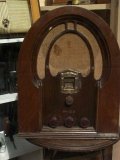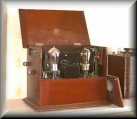Darren Copeland's Ten Questions for a Listener
at http://interact.uoregon.edu/Medialit/WFAE/library/articles/copeland_listener.pdf
Some comments on how to use this marvellous resource..............
These questions from Darren Copeland encourage the students to :
|
Develop their sound vocabulary. So visit Barry Truax's HANDBOOK FOR ACOUSTIC ECOLOGY http://www.sfu.ca/sonic-studio/handbook/index.html |
|||||||||
|
Suggestions of various topics Noise at http://www.sfu.ca/sonic-studio/handbook/Noise.html Soundscape at http://www.sfu.ca/sonic-studio/handbook/Soundscape.html Soundmark at http://www.sfu.ca/sonic-studio/handbook/Soundmark.html Keynote at http://www.sfu.ca/sonic-studio/handbook/Keynote.html Sound at http://www.sfu.ca/sonic-studio/handbook/Sound.html Ear at http://www.sfu.ca/sonic-studio/handbook/Ear.html Acoustics at http://www.sfu.ca/sonic-studio/handbook/Acoustics.html Silence at http://www.sfu.ca/sonic-studio/handbook/Silence.html Spectrum at http://www.sfu.ca/sonic-studio/handbook/Spectrum.html |
|||||||||
|
Also - look up the definitions of -
|
|||||||||
| Look also at Auditorium Acoustics 101: The Quieter, the Better. This is about church acoustics, and it has a lot of useful information - at http://www.church-acoustics.com/aa101.htm | |||||||||
| FICTIONALISED SOUNDS IN RADIO DRAMA | |||||||||
| See Becoming aware of sound events in radio plays | |||||||||
| Learn more about sound in the Lifeworld and then transfer that into the fictionalisation of sound. | |||||||||
| Fictionalisation of sound - what is taken out or missing from Lifeworld sound for radio drama sounds? | |||||||||
| Note the difference between everyday listening (perceiving sources of sounds) and the experience of listening to music and radio drama (perceiving sounds). There are differences in focus and attention, and listening mode. | |||||||||
| In listening to the radio play, the radio listener is positioned at the ideal point, the 'point-of-listening' (POL).See Point-of-listening in radio plays - Beck, Alan, 1998, Sound Journal |
| LIFEWORLD SOUNDS - how we listen - recognition and learning |
| See Sound - sound effects - sound events - physics of sound. |
| Sounds are perceived in terms of pitch, loudness, timbre, and other features. |
| LIFEWORLD SOUNDS CAN BE CONFUSING: Sometimes we can sort and identify all the sound events we hear. |
|
Sounds in one category cannot be confused with those of any other category. But we live in an under-determined world, with an infinity of sounds and categories. Sounds blend into each other and mask each other. |
|
As we process incoming sounds (via our ear-to-brain mechanism), we reduce sounds into categories. We look for features of a sound event that will reliably distinguish it. |
| We build up our skills in identifying sounds and their categories from experience. |
List of sounds in categories for radio drama
| vocal sounds - human speech - dialogue - the voice stream |
|
vocalising from animals and insects, sound-making from insects (barking, mooing, insect shrieking, scratching). |
|
non-vocalised sounds of human origin (scratching, clothes rustling, footsteps) - these indicate the 'more than words' (or embodying the dialogue) - representing living in the vocal stream (Beck, Radio Acting, 61). |
| Non-vocalised sound events of sentient beings which are non-human (animals moving, insects clicking) |
|
Sound events not originating from living beings, that is originating from nonsentient objects (stones falling, machines, thunder). |
|
Music |
| Atmos, background, soundscape, ambient sound, including 'room tone' and the 'aural fingerprint' of locations |
| Silence(s). Stearns, 1995 describes silence as: 'A dramatic element. It can be very loud.' (See Shingler and Wieringa, 1998, 54 for a revealing discussion.) See silences - different sorts and Silences and the overall design |
|
|



